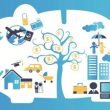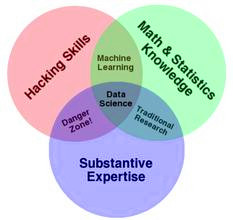经济学英文作业一般都是有一定难度的,因为里面涉及大量的数学运算知识。而经济学被称为留学生热门专业,受到很多留学生追捧!导致经济学作业代写难度增高~本文是一篇经济学论文,配合Eviews软件和Excel完成。想找留学生经济学论文代写?欢迎联系网站客服!
英汉双语版
【An Empirical Analysis of Urban Residents in Henan non-essential consumption and expected income – based on adaptive expectations model】
In this paper, paper REVIEW :: ELES by Eviews software based on the model to calculate the basic amount of Henan basic consumer consumption 1993-2008 year of Africa, were illustrated by excel software analysis of relevant data, and pull toward the incremental analysis was non-essential consumption of urban residents has stabilized, non-essential consumption is the main consumer spending increases. Adaptive expectations model for the establishment of basic living consumption on the basis of the above data, the regression analysis showed that revenue is expected to have a significant impact on non-essential consumption, increase the income of urban residents is expected to expand consumption is important.
Paper Keywords: non-essential consumption, ELES model, the contribution rate, adaptive expectations model
Issues raised [①]
Consumption is the driving force of economic development is one of the driving economic growth in the troika. 2008 calculated by expenditure, GDP in Henan 1.847314 trillion yuan, ranking fifth in the country, final consumption expenditure of 775.933 billion yuan project management papers, accounting for 42.0% of GDP (final consumption rate), less than National final consumption rate average 6.6 percentage points, ranking No. 25. 2007 Henan provincial government spending 201.127 billion yuan, accounting for 13.4% of GDP (government consumption rate), consumer spending 482 billion yuan, accounting for 32.1% of GDP (less than 1 in Henan consumer spending logical reasoning rate), in accordance with well-known empirical research development economist H. Chenery, government consumption rate is generally maintained at between 11.9% -15.0%, in line with the Henan provincial government consumption rate H. Chenery standard structure (arrow 1), but the rate is far below the standard consumer consumption rate structure, more than 60 percent of residents in service level papers. In consumer spending, consumption expenditure of urban residents in Henan Province was 8837.46 yuan project management papers, accounting for 66.793% of urban residents’ income, lower than the national average of 4.5 percent, ranking No. 5 national countdown. According to preliminary statistics, in 2009, Henan Province, the Engel coefficient of urban households was 34.2 percent, according to Engel’s coefficient standard FAO raised the standard of living of urban residents in Henan Province since 1996 has entered the well-off level, consumption patterns have begun to enjoy the development of the survival model transformation, based domestic consumption has been basically stable and resilient lower (arrow 2), so the non-essential consumption is low is the root of the problem (Figure 1).
First, the non-basic consumption model based on analysis of a non-basic concepts of living and consumption as defined by the order to meet the needs of the people can be divided into basic and non-basic consumer consumption, basic living consumption is necessary to maintain the reproduction of labor power , minimum consumption. Non-essential consumption is symmetrical basic consumption, is beyond the reproduction of labor required to maintain consumption. In general project management papers, people only if they meet the basic living conditions of consumption, possible development of non-essential consumption. This reference to ‘consumer economics dictionary’ meaning a reasonable part of the explanation, and non-essential consumption do some extension services and supplementary papers. Non-essential consumption refers to maintain and continue to meet the people living their lives under the basic premise of consumption, to meet their own development and play their physical, mental, and make life comfortable for the consumer, the spirit of consumption and labor consumption collectively substances. Living expenditure, basic consumer spending, non-basic living expenditure respectively CE (consumption expenditures), BLC (basic living consumption), NBLC (non-basic living consumption), said.
2, extended linear expenditure system (ELES) consumption of non-basic model assumes a certain period to build demand for various goods and people (services) depends on people’s income, but the demand for various commodities into basic needs beyond basic needs and exceed the needs of two parts, the residents after the basic needs are met before revenue arrange the remaining non-essential spending according to some marginal propensity to consume. ELES demand function model of non-essential consumption of [②]: 
Parameters ![]() Is the marginal propensity to consume, to meet: 0 <β i <1,
Is the marginal propensity to consume, to meet: 0 <β i <1, ![]() <A
<A
The deformation of the model:


So that V = ![]() ; A =
; A = ![]() ; B =
; B = ![]()
![]()
Regression equations can be obtained for a * and b *, and further can be obtained:

![]()
3, quantitative analysis of non-essential consumption model using cross-sectional data consumption expenditure of urban residents in Henan 1993-2008 grouped by income level, in order to correct and prevent data appears heteroscedasticity, we use the weighted least squares (WLS) method regression equation parameters estimated project management papers, weights W = resid ^ (- 2). Chosen significance level of 0.05. t (d) β * i is the observed value of t, R 2 coefficient of determination for the equation paper services.
WLS regression conducted by EVIEWS software results are as follows [③]:
2008 Urban Residents of consumption estimated parameters on ELES ![]()
t β = 598.6320 R 2 = 1.000000 DW = 2.276046 F = 358360.2
2007 Urban Residents of consumption estimated parameters on ELES ![]()
t β = 31.44564 R 2 = 0.999890 DW = 2.310967 F = 988.8286
2006 Urban Residents of consumption estimated parameters on ELES ![]()
t β = 59.77045 R 2 = 1.000000DW = 1.776125 F = 3572.506
2005 Consumption of Urban Residents ELES regression model to estimate the parameters ![]()
t β = 2019.675R 2 = 1.000000 DW = 1.427389 F = 4079087.
2004 Consumption of Urban Residents ELES regression model to estimate the parameters ![]()
t β = 239.4272R 2 = 1.000000DW = 1.674908 F = 57325.39
2003 Consumption of Urban Residents regression model to estimate the parameters ELES ![]()
t β = 128.6925R 2 = 0.999795DW = 1.609279 F = 16561.75
2002 Urban Residents of consumption estimated parameters on ELES ![]()
t β = 180.7875R 2 = 0.999991DW = 1.718861 F = 32684.13
2001 Urban Residents of consumption estimated parameters on ELES ![]()
t β = 175.2843R 2 = 0.999999DW = 1.181300 F = 30724.59
2000 Urban Residents of consumption estimated parameters on ELES ![]()
t β = 30.37496R 2 = 0.999990DW = 1.323353 F = 922.6385
1999 Urban Residents of consumption estimated parameters on ELES ![]()
t β = 445.2760 R 2 = 1.000000 DW = 2.680368 F = 198270.7
1998 Urban Residents of consumption estimated parameters on ELES ![]()
t β = 133.6603R 2 = 0.999997DW = 1.623019 F = 17865.07
1997 Urban Residents of consumption estimated parameters on ELES ![]()
t β = 341.95878R 2 = 0.999954DW = 1.505179 F = 1760.539
1996 Urban Residents of consumption estimated parameters on ELES ![]()
t β = 99.82376R 2 = 0.999999 DW = 1.794003 F = 9964.783
1995 Urban Residents of consumption estimated parameters on ELES ![]()
t β = 1196.196R 2 = 1.000000DW = 1.504203 F = 1430885.
1994 Urban Residents of consumption estimated parameters on ELES ![]()
t β = 3144.5403R 2 = 0.999990DW = 2.396234 F = 20891.89
1993 Urban Residents of consumption estimated parameters on ELES ![]()
t β = 42.16312R 2 = 0.999993DW = 2.142866 F = 1777.729
1992 Urban Residents of consumption estimated parameters on ELES ![]()
t β = 202.8902R 2 = 0.999990 DW = 1.223436 F = 41164.42
Summarizes the estimated results of the regression equation, and the results by Excel software as follows:
Table 1 1993-2008 Urban Residents of basic and non-basic consumer spending Unit: yuan
| Category
Years |
CE |
a * |
b * ( |
|
NBLC |
|
2008 |
8837.46 |
1475.782 |
0.562177 |
3370.727 |
5466.733 |
|
2007 |
7826.72 |
1268.192 |
0.593939 |
3123.156 |
4703.564 |
|
2006 |
6685.18 |
1603.482 |
0.511453 |
3282.145 |
3403.035 |
|
2005 |
6038.02 |
1209.152 |
0.541007 |
2634.358 |
3403.662 |
|
2004 |
5294.19 |
1197.215 |
0.522404 |
2506.753 |
2787.437 |
|
2003 |
4941.60 |
955.1838 |
0.562634 |
2183.946 |
2757.654 |
|
2002 |
4504.68 |
1417.536 |
0.480717 |
2729.795 |
1774.885 |
|
2001 |
4110.17 |
676.3441 |
0.651922 |
1943.082 |
2167.088 |
|
2000 |
3830.71 |
814.1469 |
0.633153 |
2219.309 |
1611.401 |
|
1999 |
3497.53 |
745.6160 |
0.607170 |
1898.063 |
1599.467 |
|
1998 |
3415.65 |
882.5848 |
0.605248 |
2235.796 |
1179.854 |
|
1997 |
3378.02 |
590.5870 |
0.681768 |
1855.838 |
1522.182 |
|
1996 |
3009.35 |
596.1219 |
0.635379 |
1634.908 |
1374.442 |
|
1995 |
2673.95 |
622.2854 |
0.615177 |
1617.069 |
1056.881 |
|
1994 |
2155.15 |
359.2111 |
0.684511 |
1138.585 |
1016.565 |
|
1993 |
1609.26 |
393.4778 |
0.608181 |
1004.234 |
605.0264 |
|
1992 |
1342.58 |
260.5322 |
0.674353 |
800.0448 |
542.5352 |
Source: Statistical Yearbook 1994-2009 Henan Province Second, the basic and non-basic consumption Consumption a graphical analysis, graphical analysis of the amount of per capita consumption expenditure of urban residents in Henan Province in 1992 was only 1342.58 yuan, reached in 2008 8837.46 yuan, basic living consumption per capita since 1992 800.0448 yuan change to 3370.727 yuan per capita in 2008, non-essential consumption per capita from 1992 542.5352

Figure 2 consumption expenditure of urban residents, basic living consumption compared with non-essential consumption increased from 2008 yuan per capita 5466.733 yuan. As shown in Figure 2, we find that the basic trends of living is relatively slow, rather than the basic consumption rising trend more obvious. Among them, in 2001 for the first time non-essential consumption exceeds the basic consumption, although the decline in project management papers in 2002, but in 2003 the consumption of non-basic fundamentals for life is over, and gradually widen the gap, as of 2008 the non-basic consumption has exceeded the basic consumption 2096.006 yuan.
2. Incremental invest and Promotion of Urban Residents in per capita consumption expenditure increment (△ CE) significantly inverted ‘U’ type, from 266.68 yuan per capita in 1993 was reduced to 37.63 yuan in 1998, then gradually increased, which, nearly two years of people significant incremental consumer spending, 1141.54 yuan per capita in 2007, 2008 was 1010.74 yuan per capita. Basic consumption increment (△ BLC) volatility is not obvious, and gradually reduce in the early nineties, followed in 1993 and gradually rose to the level of project management papers, remained at around 200 yuan per capita, than to invest in incremental and overall contribution rate downward trend, indicating that the basic cost of living has stabilized. Incremental different basic consumption, non-essential consumption (△ NBLC) fluctuations more obvious, the overall trend showed a gradual increase, indicating that non-essential consumption greater outside influence, but also stimulate the growth of the main thesis service increment. Incremental contribution toward ratio can be well illustrate this point, the incremental non-essential consumption rose from 1993 to invest in the 0.23433 to 0.75506 in 2008, although during the undulating, but the trend is more obvious, the contribution rate from 4.7 percent in 1993 to expand to 9.8 percent in 2008. Results of the analysis (Table 2) indicate the potential to pull non-essential consumption is greater than the basic consumption.
Table 2 Henan Province to invest and consume incremental contribution rate than urban residents Unit: yuan,%
| Year Project |
△ CE |
△ BLC |
△ NBLC |
Incremental invest more than |
Contribution rate |
||
|
△ BLC / △ CE |
△ NBLC / △ CE |
CR 1 |
CR 2 |
||||
|
1993 |
266.68 |
204.1892 |
62.4912 |
0.765671 |
0.23433 |
0.152087 |
0.046545606 |
|
1994 |
545.89 |
134.351 |
411.5386 |
0.246114 |
0.753886 |
0.083486 |
0.255731578 |
|
1995 |
518.8 |
478.484 |
40.316 |
0.92229 |
0.07771 |
0.222019 |
0.018706819 |
|
1996 |
335.4 |
17.839 |
317.561 |
0.053187 |
0.946813 |
0.006671 |
0.118761009 |
|
1997 |
368.67 |
220.93 |
147.74 |
0.599262 |
0.400738 |
0.073415 |
0.049093658 |
|
1998 |
37.63 |
379.958 |
-342.328 |
10.09721 |
-9.09721 |
0.112479 |
-0.10133984 |
|
1999 |
81.88 |
-337.733 |
419.613 |
-4.12473 |
5.124731 |
-0.09888 |
0.122850116 |
|
2000 |
333.18 |
321.246 |
11.934 |
0.964182 |
0.035818 |
0.091849 |
0.003412122 |
|
2001 |
279.46 |
-276.227 |
555.687 |
-0.98843 |
1.988431 |
-0.07211 |
0.145061098 |
|
2002 |
394.51 |
786.713 |
-392.203 |
1.994152 |
-0.99415 |
0.191406 |
-0.09542257 |
|
2003 |
436.92 |
-545.849 |
982.769 |
-1.24931 |
2.249311 |
-0.12117 |
0.218166218 |
|
2004 |
352.59 |
322.807 |
29.783 |
0.915531 |
0.084469 |
0.065324 |
0.006026995 |
|
2005 |
743.83 |
127.605 |
616.225 |
0.171551 |
0.828449 |
0.024103 |
0.116396465 |
|
2006 |
647.16 |
647.787 |
-0.627 |
1.000969 |
-0.00097 |
0.107285 |
-0.00010384 |
|
2007 |
1141.54 |
-158.989 |
1300.529 |
-0.13928 |
1.139276 |
-0.02378 |
0.194539115 |
|
2008 |
1010.74 |
247.571 |
763.169 |
0.24494 |
0.75506 |
0.031632 |
0.097508152 |
Note: CR 1, CR 2 on behalf of basic consumption, non-essential consumption of urban residents consumption contribution. CR 1 = g * △ BLC / △ CE project management papers, CR 2 = g * △ NBLC / △ CE, where g = (CE t -CE t-1) / CE t-1
Third, the expected income and non-essential consumption model analysis 1, the expected income and consumption of non-basic model building to establish expected income and non-basic consumption needs of the formation mechanism of the model is expected to make some kind of income is assumed, the paper self expected to adapt the model, assuming that the main consumer of the expected revenue is through a simple learning process of the formation, the mechanism is the main consumer according to the degree of error in his past when committed as expected revenue, to correct them after every expected income of a period is expressed mathematically:
Y t * = Y t-1 * + λ (Y t -Y t-1 *), where Y * is the expected income, λ to adapt coefficient derivation 0≤ λ≤1 project management papers, the model is:
NBLC t = ?? + ?? Y t * + ?? t ……………………………… (1)
The adaptation process after deformation income into (1) the formula: NBLC t = ?? + ?? [λY t* + (1-λ) Y t-1 *] ……………………… (2)
The (1) – (2) * (1-λ), finishing: NBLC t = λ ?? + λ ?? Y t + (1-λ) NBLC t-1 + [?? t – (1-λ ) ?? t-1]……………… (3)
So a = λ ??, b 0 = λ ??, b 1 = (1-λ), u t = [?? t – (1-λ) ?? t-1] …………………… ………… (4)
∴ model can be modified as: NBLC t = a + b 0 Y t + b 1 NBLC t-1 + u t t……………………………… (5)
For (4) first-order autoregressive regression model, you can get a, b estimated value 0, b 1,and substituting (4) model estimates can be obtained. 2. Empirical Analysis of expected income and non-essential consumption of 1) analysis of the results obtained by the following regression eviews software [④]:
Table 3 adaptive expectations model regression results
|
Variable |
Coefficient |
Std. Error |
t-Statistic |
Prob. |
|
C |
-405.7075 |
128.1870 |
-3.164967 |
0.0075 |
|
Y |
0.607486 |
0.090002 |
6.749687 |
0.0000 |
|
NBLC (-1) |
-0.538431 |
0.253073 |
-2.127573 |
0.0531 |
|
R-squared |
0.978529 |
Mean dependent var |
2276.867 |
|
|
Adjusted R-squared |
0.975226 |
SD dependent var |
1383.685 |
|
|
SE of regression |
217.7894 |
Akaike info criterion |
13.77229 |
|
|
Sum squared resid |
616,618.6 |
Schwarz criterion |
13.91715 |
|
|
Log likelihood |
-107.1784 |
F-statistic |
296.2347 |
|
|
Durbin-Watson stat |
1.973887 |
Prob (F-statistic) |
0.000000 |
|
2) Model Checking Durbin h test:
By excel software computing, Var (b 1 *) = 0.221790948, the regression results DW = 1.973887


= 0.059412 <h ?? / 2 = 1.93
So accept the null hypothesis ?? = 0, the regression model does not exist an order autocorrelation.
Statistical inference test:
Table 3 data available by the coefficient of determination R2 = 0.978529 correction coefficient of determination was 0.975226, indicating that the model fit the data on the whole sample papers better service. As can be seen from the results of the regression of t (b 0 *) = 6.749687 project management papers, t (b 1 *) = – 2.127573, prob (b 0 *) = 0.00000 <0.0536, prob (b 1*) = 0.0531 <0.0536 shows disposable income and lagged consumption of non-essential consumption respectively have significant influence. F-test value 296.2347 Description lagged consumption and disposable income have a significant impact overall 3) equation NBLC expected income and non-essential consumption of non-essential consumption = -263.7151 + 0.39487Y *
From where we know that expectations have a significant impact on the income of non-essential spending, when disposable income is expected to be increased by 1 million, there is 0.39487 yuan for non-essential consumption.
Fourth, the policy recommendations of the Urban Residents consumption level has been reached affluence levels and trends through the basic consumption of non-essential consumer spending as well as a description of each incremental analysis to invest in and pull, we can see the basic living expenditure has stabilized, non-essential consumption The key is to expand consumption of household consumption from the regression results, the expected income has a significant impact on non-essential consumption, so the increase and stabilize income of urban residents is expected to increase the focus of urban residents’ consumption.
References:
[1] Huang Xintian, easy food consumption trends of urban residents and sea. Hubei Province [J] Statistics and Decision, 1999 (02)
[2] Alice Wong, Wu Tong. Using the extended linear expenditure system for urban residents in Guangdong Province, consumption structure analysis [J]. Consumer Economics, 1999 (04)
[3] Pang Hao econometrics [M]. Beijing: Science Press, 2006 (01)
[4] Zhang Cave .Eviews Guide and Case [M] Beijing: Mechanical Industry Press, 2007 (02)
以下为汉语对照版。【经济学留学生论文代写请联系网站客服!】
论文导读::本文在ELES模型基础上通过Eviews软件计算出河南省1993—2008年逐年的基本消费量与非基本消费量,通过excel软件对相关数据进行图示分析、增量投向与拉动分析得出城镇居民的非基本消费已经趋于稳定,非基本消费是消费支出增加的主力。在以上数据的基础上建立非基本生活消费的自适应预期模型,通过回归分析得知,收入预期对非基本生活消费有显着影响,增加城镇居民收入预期对扩大消费有重要意义。
论文关键词:非基本生活消费,ELES模型,贡献率,自适应预期模型
问题的提出[①]
消费是经济发展的动力,是拉动经济增长的三驾马车之一。2008年按支出法计算,河南省国民生产总值18473.14亿元,居全国第五位,最终消费支出为7759.33亿元项目管理论文,占国民生产总值的42.0%(最终消费率),低于全国最终消费率平均水平6.6个百分点,居全国第25位。2007年河南省政府消费支出2011.27亿元,占国民生产总值的13.4%(政府消费率),居民消费支出4820.00亿元,占国民生产总值的32.1%(居民消费
图1 河南省消费不足的逻辑推理
率),按照着名发展经济学家H.钱纳里等实证研究,政府消费率一般维持在11.9%—15.0%之间,河南省政府消费率符合H.钱纳里的标准结构(箭头 1),但是居民消费率却远低于标准结构中的居民消费率大于60%的水平论文服务。在居民消费支出中,河南省城镇居民消费支出为8837.46元项目管理论文,占城镇居民收入的66.793%,低于全国平均水平4.5个百分点,居全国倒数第5位。据初步统计2009年河南省城镇居民家庭恩格尔系数为34.2%,依据联合国粮农组织提出的恩格尔系数标准,河南省城镇居民生活水平自1996年已进入小康层次,消费方式已经开始由生存型向享受发展型转变,基生活消费已经基本稳定且弹性较低(箭头2),所以非基本生活消费低是才是问题的根源(如图1)。
一、基于非基本生活消费模型分析
1、非基本生活消费的概念及界定
生活消费按满足人们需要的顺序,可分为基本生活消费和非基本生活消费,基本生活消费是维持劳动力再生产所必须的、最低限度的消费。非基本生活消费则是基本生活消费的对称,是超出维持劳动力再生产所必需的消费。一般而言项目管理论文,人们只有在满足了基本生活消费的条件下,才有可能发展非基本生活消费。本文参考了《消费经济学大辞典》的合理词义解释部分,并对非基本生活消费做了一定的延伸和补充论文服务。非基本生活消费是指在满足人们维持和延续其生命的基本生活消费的前提下,用于满足自身发展和发挥其体力、智力以及为使生活舒适的物质消费、精神消费和劳务消费的总称。生活消费支出、基本消费支出、非基本生活消费支出分别用CE(consumption expenditures)、BLC(basic living consumption)、NBLC(non-basic living consumption)表示。
2、扩展线性支出系统(ELES)下非基本生活消费的模型构建
假定某一时期人们对各种商品(服务)的需求量取决于人们的收入,而且人们对各种商品的需求分为基本需求和超过基本需求之外的需求两部分,居民在基本需求得到满足之后才将剩余收入按照某种边际消费倾向安排各种非基本消费支出。非基本生活消费的ELES模型需求函数[②]:
参数![]() 是边际消费倾向,满足:0<βi<1,
是边际消费倾向,满足:0<βi<1,![]() <1
<1
对模型的进行变形:


令V=![]() ;a=
;a=![]() ;b=
;b=![]()
![]()
对方程式进行回归可得a*和b*,进一步可求出:

![]()
3、非基本生活消费的计量分析
模型采用1993—2008按收入水平分组的河南省城镇居民消费支出的截面数据,为了修正和避免数据出现异方差,本文采用了加权最小二乘估计(WLS)法对方程参数进行回归估计项目管理论文,权重W=resid^(-2)。显着水平选取为0.05。t(d)是β*i的t观测值,R2为方程的可决系数论文服务。
通过EVIEWS软件进行WLS回归结果如下[③]:
2008年河南省城镇居民消费ELES模型的估计参数
![]()
tβ=598.6320 R2=1.000000 D-W=2.276046 F=358360.2
2007年河南省城镇居民消费ELES模型的估计参数
![]()
tβ=31.44564 R2=0.999890 D-W=2.310967 F=988.8286
2006年河南省城镇居民消费ELES模型的估计参数
![]()
tβ=59.77045 R2=1.000000D-W=1.776125 F=3572.506
2005年河南省城镇居民消费ELES模型的回归估计参数
![]()
tβ=2019.675R2=1.000000 D-W=1.427389 F=4079087.
2004年河南省城镇居民消费ELES模型的回归估计参数
![]()
tβ=239.4272R2=1.000000D-W=1.674908 F=57325.39
2003年河南省城镇居民消费ELES模型的回归估计参数
![]()
tβ=128.6925R2=0.999795D-W=1.609279 F=16561.75
2002年河南省城镇居民消费ELES模型的估计参数
![]()
tβ=180.7875R2=0.999991D-W=1.718861 F=32684.13
2001年河南省城镇居民消费ELES模型的估计参数
![]()
tβ=175.2843R2=0.999999D-W=1.181300 F=30724.59
2000年河南省城镇居民消费ELES模型的估计参数![]()
tβ=30.37496R2=0.999990D-W=1.323353 F=922.6385
1999年河南省城镇居民消费ELES模型的估计参数![]()
tβ=445.2760 R2=1.000000 D-W=2.680368 F=198270.7
1998年河南省城镇居民消费ELES模型的估计参数![]()
tβ=133.6603R2=0.999997D-W=1.623019 F=17865.07
1997年河南省城镇居民消费ELES模型的估计参数![]()
tβ=341.95878R2=0.999954D-W=1.505179 F=1760.539
1996年河南省城镇居民消费ELES模型的估计参数![]()
tβ=99.82376R2=0.999999 D-W=1.794003 F=9964.783
1995年河南省城镇居民消费ELES模型的估计参数 ![]()
tβ=1196.196R2=1.000000D-W=1.504203 F=1430885.
1994年河南省城镇居民消费ELES模型的估计参数![]()
tβ=3144.5403R2=0.999990D-W=2.396234 F=20891.89
1993年河南省城镇居民消费ELES模型的估计参数![]()
tβ=42.16312R2=0.999993D-W=2.142866 F=1777.729
1992年河南省城镇居民消费ELES模型的估计参数![]()
tβ=202.8902R2=0.999990 D-W=1.223436 F=41164.42
匯总回归方程估计结果,通过Excel软件处理结果如下:
表1 1993-2008年河南省城镇居民基本消费和非基本消费支出情况单位:元
| 类别
年份 |
CE |
a* |
b*( |
|
NBLC |
|
2008 |
8837.46 |
1475.782 |
0.562177 |
3370.727 |
5466.733 |
|
2007 |
7826.72 |
1268.192 |
0.593939 |
3123.156 |
4703.564 |
|
2006 |
6685.18 |
1603.482 |
0.511453 |
3282.145 |
3403.035 |
|
2005 |
6038.02 |
1209.152 |
0.541007 |
2634.358 |
3403.662 |
|
2004 |
5294.19 |
1197.215 |
0.522404 |
2506.753 |
2787.437 |
|
2003 |
4941.60 |
955.1838 |
0.562634 |
2183.946 |
2757.654 |
|
2002 |
4504.68 |
1417.536 |
0.480717 |
2729.795 |
1774.885 |
|
2001 |
4110.17 |
676.3441 |
0.651922 |
1943.082 |
2167.088 |
|
2000 |
3830.71 |
814.1469 |
0.633153 |
2219.309 |
1611.401 |
|
1999 |
3497.53 |
745.6160 |
0.607170 |
1898.063 |
1599.467 |
|
1998 |
3415.65 |
882.5848 |
0.605248 |
2235.796 |
1179.854 |
|
1997 |
3378.02 |
590.5870 |
0.681768 |
1855.838 |
1522.182 |
|
1996 |
3009.35 |
596.1219 |
0.635379 |
1634.908 |
1374.442 |
|
1995 |
2673.95 |
622.2854 |
0.615177 |
1617.069 |
1056.881 |
|
1994 |
2155.15 |
359.2111 |
0.684511 |
1138.585 |
1016.565 |
|
1993 |
1609.26 |
393.4778 |
0.608181 |
1004.234 |
605.0264 |
|
1992 |
1342.58 |
260.5322 |
0.674353 |
800.0448 |
542.5352 |
数据来源:1994-2009年河南省统计年鉴
二、基本生活消费与非基本生活消费图示分析
1、量的图示分析
河南省城镇居民人均消费支出在1992年仅为1342.58元,在2008年达到8837.46元,基本生活消费自1992年的人均800.0448元变化到2008年的人均3370.727元,非基本生活消费也从1992年人均542.5352

图2城镇居民消费支出、基本生活消费与非基本生活消费比较
元增加至2008年的人均5466.733元。如图2所示,我们不难发现,基本生活消费的变化趋势比较缓慢,而非基本生活消费的上升趋势较明显。其中,2001年非基本生活消费在首次超过基本生活消费,虽然在2002年有所下降项目管理论文,但是在2003年非基本生活消费又超过基本生活消费,并逐渐扩大差距,截至2008年非基本生活消费已超出基本生活消费2096.006元。
2、增量投向与拉动分析
河南省城镇居民人均消费支出增量(△CE)明显呈倒“U”型,从1993年的人均266.68元降低至1998年的37.63元,随后逐步上升,其中,近两年的人居民消费支出增量明显,2007年为人均1141.54元,2008年为人均1010.74元。基本生活消费增量(△BLC)的波动不明显,在九十年代前期逐步降低,随后又逐步上升到1993年的水平项目管理论文,维持在人均200元左右,增量投向比和贡献率总体呈下降趋势,说明基本生活费已趋于稳定。与基本生活消费增量不同,非基本生活消费(△NBLC)波动比较明显,总体呈逐步增加趋势,说明非基本生活消费受外界影响较大,也是拉动增量增长的主力论文服务。增量投向比与贡献率也能很好的说明这一点,非基本生活消费增量投向比从1993年的0.23433上升至2008年0.75506,期间虽然起伏较大,但是趋势比较明显,贡献率也从1993年的4.7的百分点扩大至2008年9.8个百分点。分析的结果(表2)表明非基本生活消费的拉动潜力比基本生活消费大。
表2 河南省城镇居民消费增量投向与贡献率比单位:元、%
| 年份项目 |
△CE |
△BLC |
△NBLC |
增量投向比 |
贡献率 |
||
|
△BLC/△CE |
△NBLC/△CE |
CR1 |
CR2 |
||||
|
1993 |
266.68 |
204.1892 |
62.4912 |
0.765671 |
0.23433 |
0.152087 |
0.046545606 |
|
1994 |
545.89 |
134.351 |
411.5386 |
0.246114 |
0.753886 |
0.083486 |
0.255731578 |
|
1995 |
518.8 |
478.484 |
40.316 |
0.92229 |
0.07771 |
0.222019 |
0.018706819 |
|
1996 |
335.4 |
17.839 |
317.561 |
0.053187 |
0.946813 |
0.006671 |
0.118761009 |
|
1997 |
368.67 |
220.93 |
147.74 |
0.599262 |
0.400738 |
0.073415 |
0.049093658 |
|
1998 |
37.63 |
379.958 |
-342.328 |
10.09721 |
-9.09721 |
0.112479 |
-0.10133984 |
|
1999 |
81.88 |
-337.733 |
419.613 |
-4.12473 |
5.124731 |
-0.09888 |
0.122850116 |
|
2000 |
333.18 |
321.246 |
11.934 |
0.964182 |
0.035818 |
0.091849 |
0.003412122 |
|
2001 |
279.46 |
-276.227 |
555.687 |
-0.98843 |
1.988431 |
-0.07211 |
0.145061098 |
|
2002 |
394.51 |
786.713 |
-392.203 |
1.994152 |
-0.99415 |
0.191406 |
-0.09542257 |
|
2003 |
436.92 |
-545.849 |
982.769 |
-1.24931 |
2.249311 |
-0.12117 |
0.218166218 |
|
2004 |
352.59 |
322.807 |
29.783 |
0.915531 |
0.084469 |
0.065324 |
0.006026995 |
|
2005 |
743.83 |
127.605 |
616.225 |
0.171551 |
0.828449 |
0.024103 |
0.116396465 |
|
2006 |
647.16 |
647.787 |
-0.627 |
1.000969 |
-0.00097 |
0.107285 |
-0.00010384 |
|
2007 |
1141.54 |
-158.989 |
1300.529 |
-0.13928 |
1.139276 |
-0.02378 |
0.194539115 |
|
2008 |
1010.74 |
247.571 |
763.169 |
0.24494 |
0.75506 |
0.031632 |
0.097508152 |
註:CR1、CR2代表基本生活消费、非基本生活消费对城镇居民生活消费的贡献率。CR1=g*△BLC/△CE项目管理论文,CR2= g*△NBLC/△CE,其中g=(CEt-CEt-1)/ CEt-1
三、预期收入与非基本生活消费的模型分析
1、预期收入与非基本生活消费的模型构建
建立预期收入与非基本生活消费模型需要对预期收入的形成机制做出某种假定,本文主要采用自适应预期模型,假定消费主体对收入的预期是通过一种简单的学习过程而形成的,其机理是,消费主体会根据自己过去在作预期收入时所犯的错误的程度,来修正他们以后每一时期的预期收入,用数学式表示就是:
Yt*=Yt-1*+λ(Yt—Yt-1*),其中Y*为预期收入,λ为适应系数,0≤ λ≤1项目管理论文,模型的推导过程为:
NBLCt=??+??Yt*+??t………………………………(1)
将变形后的收入自适应过程代入(1)式:NBLCt=??+??[λYt*+(1—λ) Yt-1*]………………………(2)
将(1)—(2)×(1-λ),整理得:NBLCt=λ??+λ??Yt+(1—λ) NBLCt-1+[??t—(1—λ) ??t-1] ………………(3)
令a=λ??,b0=λ??,b1=(1—λ),ut=[??t—(1—λ) ??t-1] ………………………………(4)
∴ 模型可以变形为:NBLCt=a+ b0Yt+ b1 NBLCt-1+ut t………………………………(5)
对(4)式一阶自回归模型进行回归,可以得到a、 b0、 b1的估计值,代入(4)式可求出模型估计值。
2、预期收入与非基本生活消费的实证分析
1)通过eviews软件分析得出以下回归结果[④]:
表3 自适应预期模型回归结果
|
Variable |
Coefficient |
Std. Error |
t-Statistic |
Prob. |
|
C |
-405.7075 |
128.1870 |
-3.164967 |
0.0075 |
|
Y |
0.607486 |
0.090002 |
6.749687 |
0.0000 |
|
NBLC(-1) |
-0.538431 |
0.253073 |
-2.127573 |
0.0531 |
|
R-squared |
0.978529 |
Mean dependent var |
2276.867 |
|
|
Adjusted R-squared |
0.975226 |
S.D. dependent var |
1383.685 |
|
|
S.E. of regression |
217.7894 |
Akaike info criterion |
13.77229 |
|
|
Sum squared resid |
616618.6 |
Schwarz criterion |
13.91715 |
|
|
Log likelihood |
-107.1784 |
F-statistic |
296.2347 |
|
|
Durbin-Watson stat |
1.973887 |
Prob(F-statistic) |
0.000000 |
|
2)模型检验
德宾h检验:
通过excel软件计算,Var(b1*)= 0.221790948,回归结果中D-W=1.973887


= 0.059412<h??/2=1.93
因此接受原假设??=0,说明该回归模型不存在一阶自相关。
统计推断检验:
由表3数据可得可决系数R2=0.978529修正的可决系数为0.975226,说明所建模型整体上对样本数据拟合较好论文服务。由回归的结果可以看出t(b0*)=6.749687项目管理论文,t(b1*)=-2.127573,prob(b0*)=0.00000<0.0536, prob(b1*)=0.0531<0.0536,说明可支配收入与滞后消费分别对非基本消费都有显着影响。F检验值为296.2347说明支配收入与滞后消费综合对非基本消费也有显着影响
3)预期收入与非基本生活消费的方程
NBLC=-263.7151+0.39487Y*
从式中我们知道,预期收入对非基本消费有显着影响,当预期可支配收入每增加1元,就有0.39487元用于非基本生活消费。
四、政策建议
河南省城镇居民消费水平已达到富裕层次,通过基本消费与非基本消费支出的趋势描述以及各自的增量投向与拉动分析,可知基本生活消费支出已经趋于稳定,非基本生活消费是扩大消费居民消费的关键,从回归的结果看,预期收入对非基本生活消费有显着影响,所以增加和稳定城镇居民预期收入是提高城镇居民消费的着力点。
参考文献
[1]黄心田,易法海.湖北省城镇居民食物消费结构趋势分析[J] 统计与决策,1999(02)
[2]黄雅丽,吴彤.利用扩展线性支出系统对广东省城镇居民消费结构进行分析[J].消费经济,1999(04)
[3]庞浩.计量经济学[M].北京:科学出版社,2006(01)
[4]张晓峒.Eviews使用指南与案例[M].北京:机械工业出版社,2007(02)
上一篇
下一篇






